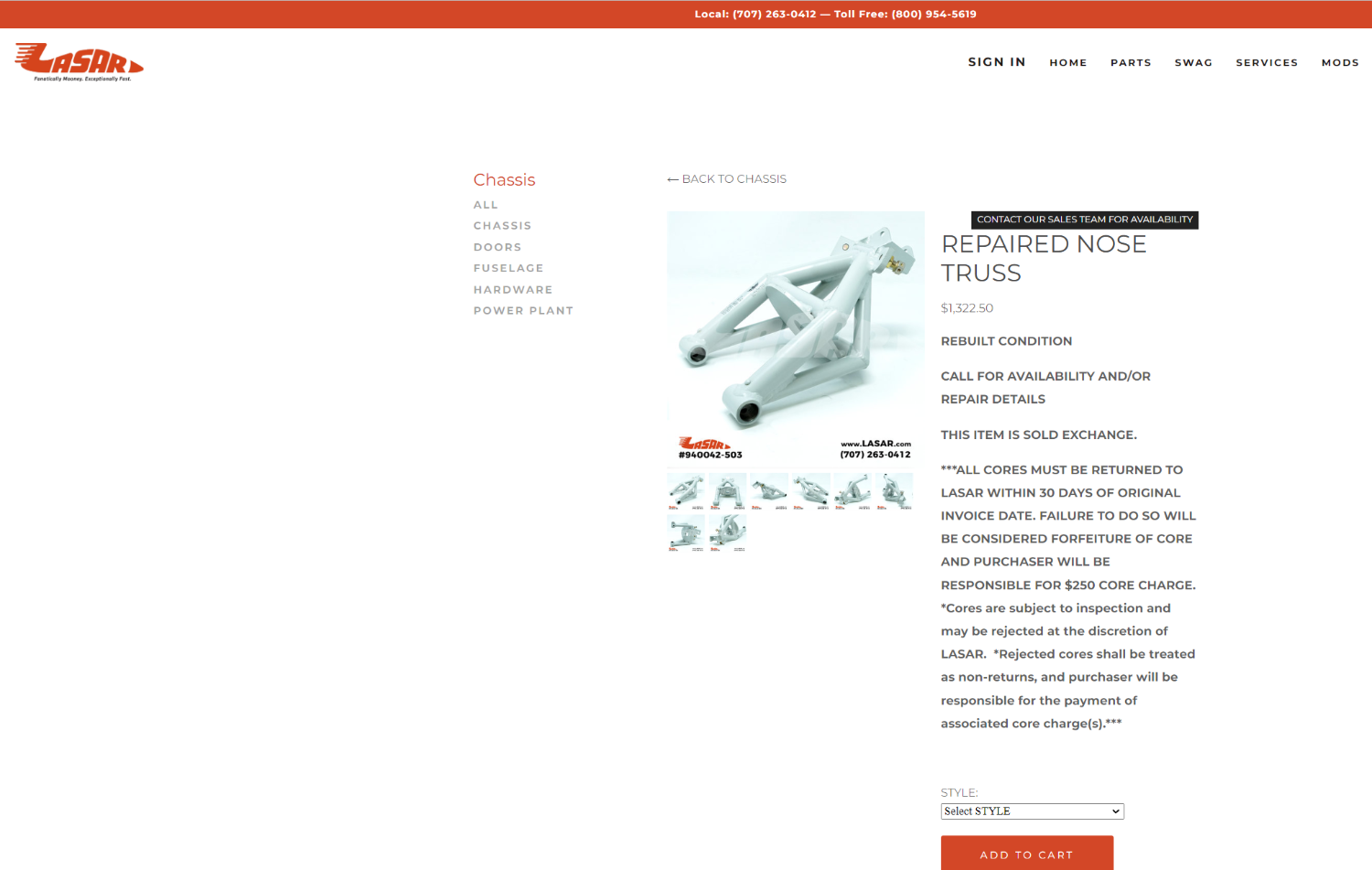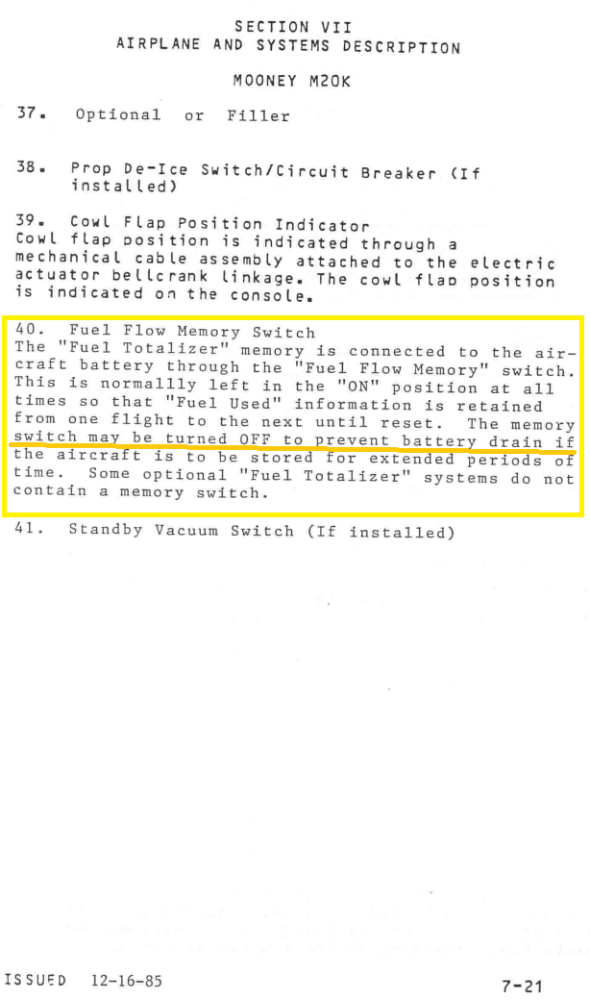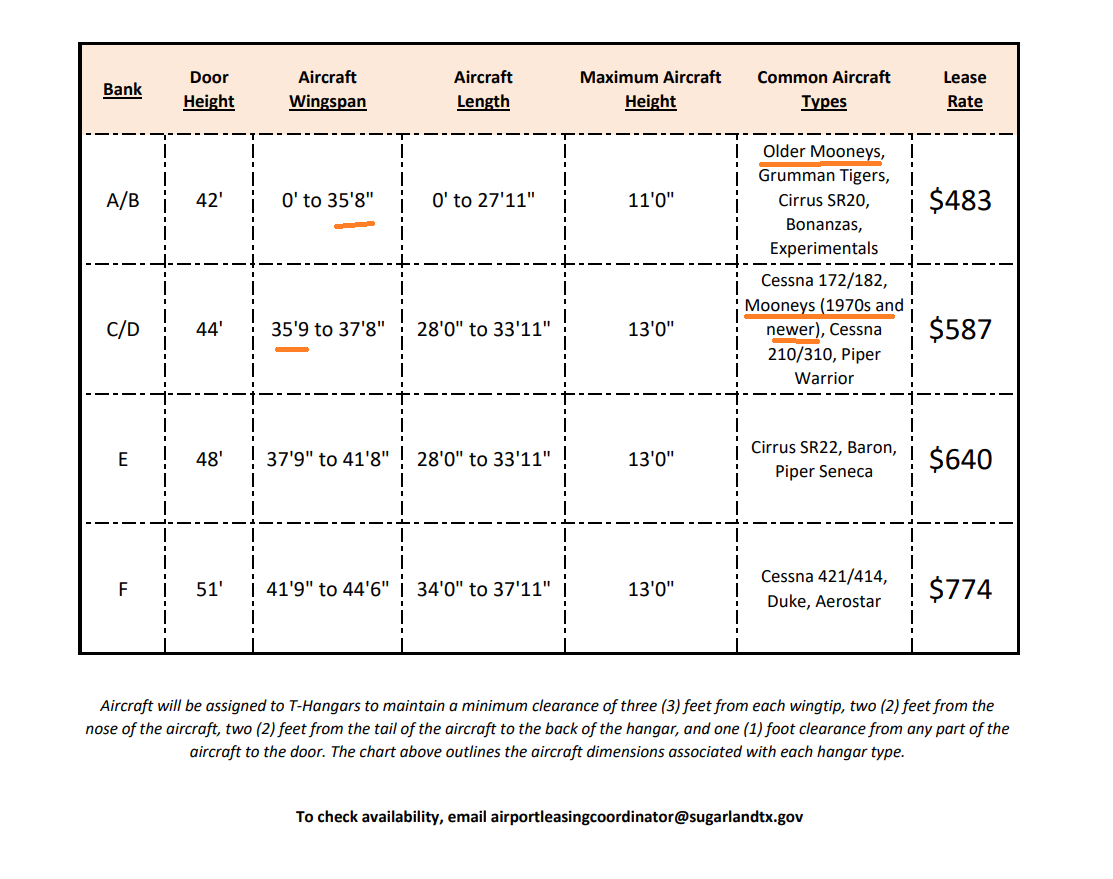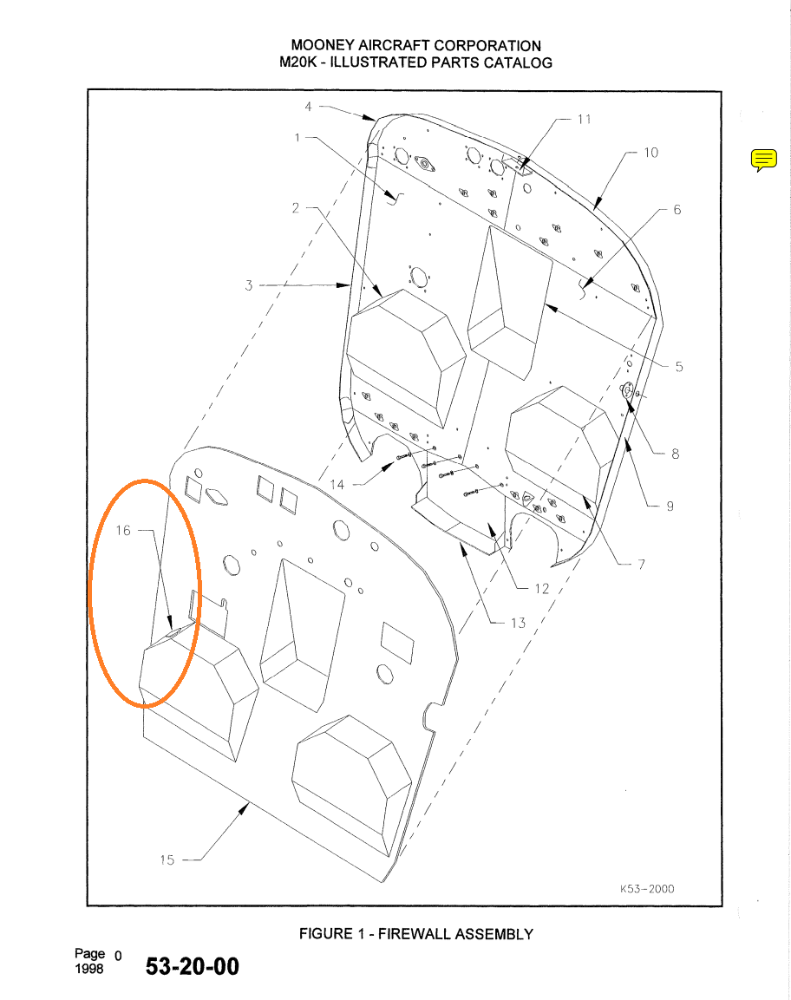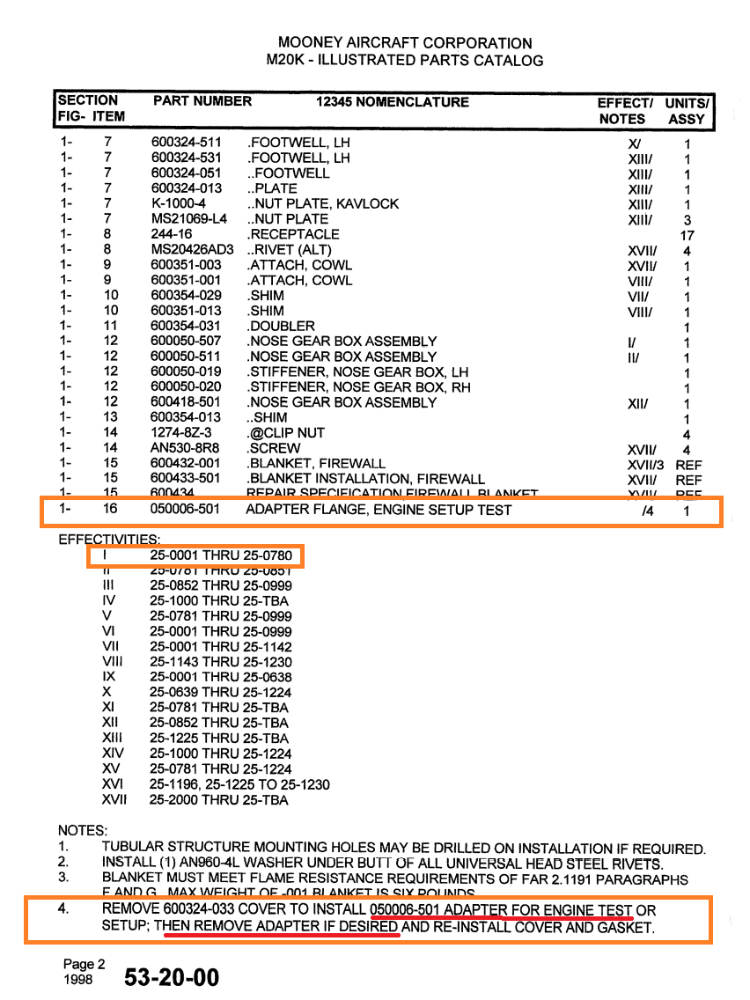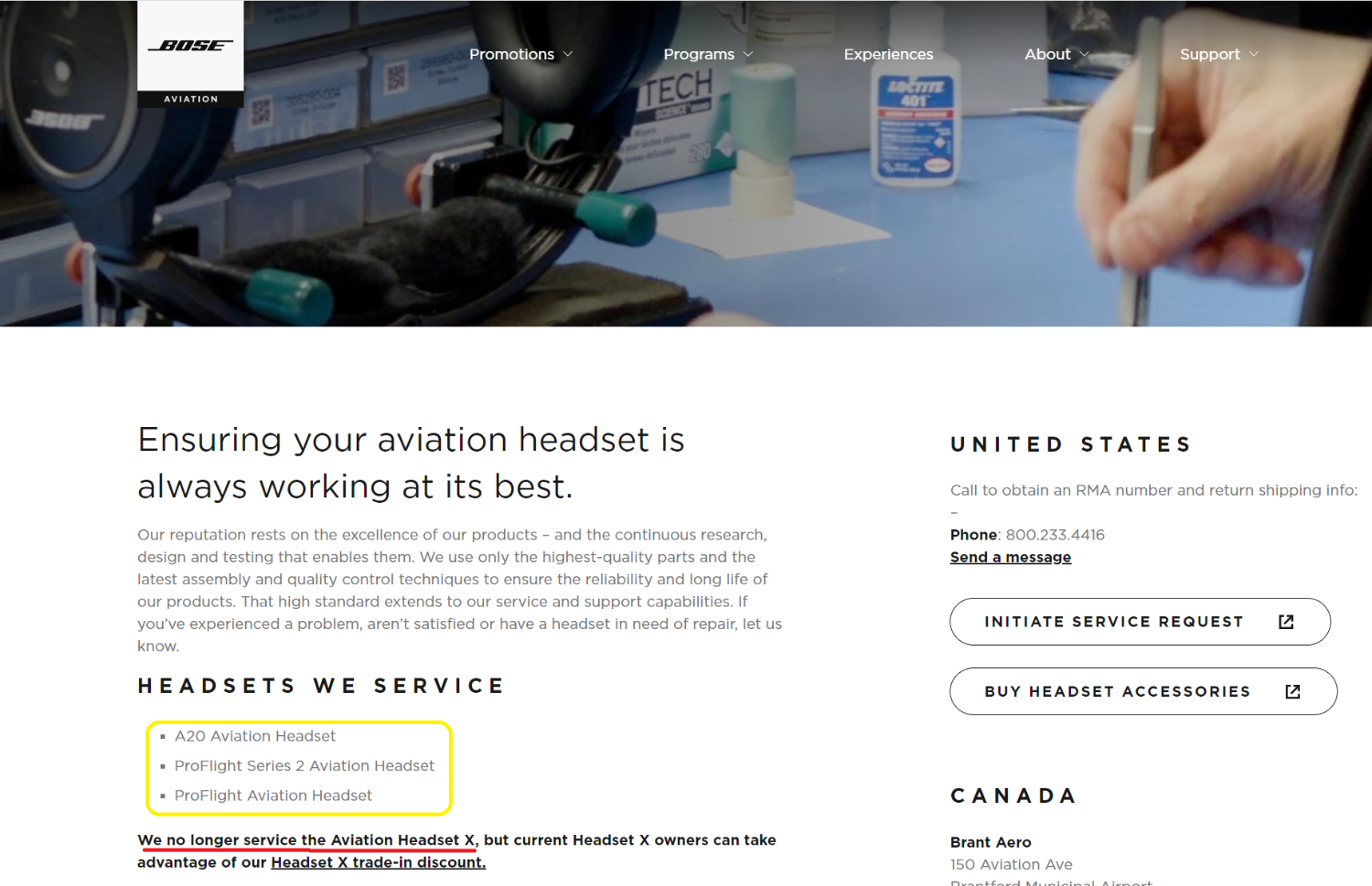
1980Mooney
Basic Member-
Posts
3,257 -
Joined
-
Last visited
-
Days Won
4
Content Type
Profiles
Forums
Blogs
Gallery
Downloads
Media Demo
Events
Everything posted by 1980Mooney
-
Check this out - more detail on the old style fuel totalizer draining battery.
-
Flew airplane after an annual, pedals are "off"
1980Mooney replied to Austintatious's topic in General Mooney Talk
Lasar advertises them. Not sure what you mean by "Lasar is no longer". They may not have any in stock and need a core first. REPAIRED NOSE TRUSS — LASAR -
Perhaps something is lost in translation. You asked the same question in a different topic. Contact @bfreelove and @VA FLYER here. They both have M20L conversions to IO-550/
-
Basically correct. There is a fused line running directly from the battery to the headliner lights and to the clock (bypassing the Master Switch). It has a single inline 5 amp fuse located in the tailcone near the battery box. On some early J and K there was an optional memory fuel flow meter totalizer (Aerosonic Floscan) that required power to retain its memory. It had a switch which you turned off during long idle periods. So there could be a third "always hot" wire stuffed in the panel even if the archaic flow scan totalizer meter had been removed. From the K POH BTW - I can't open the Concorde article on recovering a dead battery either
-
Repair station with extensive Mooney experience
1980Mooney replied to Balckbird's topic in Vintage Mooneys (pre-J models)
Valid points. Per Mike Busch: "Third, the pre-buy needs to be done within a reasonable distance of where the aircraft is located. Few sellers will be comfortable having their aircraft flown halfway across the country for a pre-buy, and few buyers want to run up a big fuel bill ferrying an aircraft a long distance when they’re not yet sure they will be buying it. The guideline we use is that the pre-buy shop should be within one hour’s flying time from the aircraft’s home base." EAA_2014-11_prebuy-dos-and-donts.pdf (savvyaviation.com) -
And not covered by the Concorde Warranty. This will be a difficult conversation with your mechanic. BTW - you seem to be experiencing a lot of electrical problems. You said above "1 New battery placed in aircraft 2 Starter would not turn over. 3 starter removed and failed test sent for warranty repair." Sounds like you had a new starter since you sent it back for "warranty repair". Did your starter kill your previous battery due to excessive starting/current draw to begin this chain of events? - is that why you put in a new Concorde battery? Was your previous starter bad and what did they find wrong with your new starter repaired under warranty? It also raises the question how the new battery got fully discharged to begin with - what was the source of leak?
-
Yes but the battery is permanently damaged. Battery Myth | Can a Battery ‘Reverse’ its Polarity? (batterystuff.com) For all intents and purposes, the battery will be ruined. You could technically charge it up, negatively, and continue to use it, but your plates are designed with the positive plates being lead dioxide, and the negative being composed of a sponge lead, which would now be reversed. Because the reversed battery is no longer formatted correctly, it will only work to a limited degree. The fact of the matter is, a lead acid battery cannot reverse its own polarity without an external stimulus. It is just not possible. Also Battery Glossary – Reverse Polarity – BatteryGuy.com Knowledge Base Correcting reverse polarity in a battery Where a battery has reverse polarity by error the following can correct it. Discharge the battery completely – connecting a low amp rated light bulb with no cut out circuitry should do this. Correctly connect a charger If the battery refuses to take the charge try a stronger charger for a few seconds (e.g. a 24 volt charger on a 12 volt battery) and then use the correct charger at its lowest settings. Note in all cases the life span of the battery will have been reduced as deep discharges damage internal components.
-
REPAIRED NOSE TRUSS — LASAR $1,322.50 exchange. With shipping and labor I bet it is 2 AMU. They say to call to check availability
-
Battery sites say it is possible for a lead-acid battery to have a reverse charge but it can't do it by itself. It takes 2 things to happen with human intervention. "The only way for a battery that has a positive charge, to reverse itself, is for the battery to be completely discharged, and then reversed charged." That would mean after the battery was somehow fully drained the mechanic, while hooking up the charger, reversed the polarity when charging. Battery Myth | Can a Battery ‘Reverse’ its Polarity? (batterystuff.com) Battery Glossary – Reverse Polarity – BatteryGuy.com Knowledge Base I have a hard time seeing how a mechanic may have installed the battery backwards (hooked the battery cables up reversed) - the cables are not long enough to switch sides and the battery only fits towards the cables one way. If it was in fact reversed and fully charged at 12.5 volts when they powered the avionics on for the pitot static test (when the OP says it was discovered) then some of the avionics may be fried.
-
Can you clarify: Did you test or start your plane after you (or mechanic) replaced the battery in order to verify it was functioning properly post installation? (right after install or some time before the static test) Did you verify voltage drop and amperage discharge when turning on anything electrical prior to engine start? Did the engine turn over strongly? Did you verify the alternator was charging after start showing positive amps as well as voltage of about 13.5 or more? You say the mechanic charged it and it tested "no charge" after charging overnight but also said 2 tests reveal "reverse" charge of 12.5 volts. "No charge" usually means dead flat zero "0". The 2 statements are in conflict. Did you turn on the Avionics Master when the battery was "reverse charged"? (Was the battery out of the plane when your mechanic charged it and when you tested reverse polarity? - or was it wired in the plane battery box?)
-
Yeah…..I think that is a typo that they never corrected in 13 years! No telling what other things are incorrect. I would estimate they are about 14 ft wide open.
-
Victoria MN crash last year
1980Mooney replied to hoot777's topic in Mooney Safety & Accident Discussion
NTSB CAROL (data base) still shows it in the "Preliminary" stage. These things take 1.5-2 years. N9156Z crashed August 7, 2021. Report_CEN21FA360_103651_10_27_2022 9_47_40 AM.pdf Kathryn's Report: Mooney M20M / 257 TLS Bravo, N9156Z: Fatal accident occurred August 07, 2021 in Victoria, Carver County, Minnesota (kathrynsreport.com) -
If you have a Mooney with the winglets at KSGR - any later J or modified J, K, Bravo, Ovation, Acclaim or any short body with winglets added they bump you into the larger hangar - A Mooney without winglets wingspan is 35'. With winglets it is 36'-1". The cut-off on hangar size is 35'-8". Winglets are 5" over the allowed wingspan on the smaller hangar and will cost you $104/mo. at Sugar Land. They will bring a tape measure out. There is no negotiation with them. I have argued with them since the hangars were built. And also the Lease says technically that you are not allowed to conduct any maintenance of your plane in the hangar. You are supposed to pay to have then tow it to a maintenance hangar on the west side of the airport. The Sugar Land T-hangars and tie-downs are not full because the prices are so high. I agree that KIWS is a rip off - I was there in the late 90's. It is just a matter of time before KIWS gets redeveloped....like Andrau, Westheimer and Weiser.
-
The Sugar Land Airport (KSGR) in this video really wants to just cater to corporate, business and commercial aviation. It makes a minimal commitment to non-commercial/non-business aviation like us General Aviation here on MS. They built 99 T-Hangars in 2009 and tore down all the inexpensive T-Hangars on the north side of the field (Ask me how I know!) Hangar rent for a Mooney went from $250/month for the old hangars immediately to $485/month at the time. They started raising rent 2 years later and now the rent is $587/month. - it has been at that for a while so I am bracing for another rent increase. And hangar rules here in Texas are probably as strict or more strict than other states - no modification of hangar of any kind, no heaters, no storage of anything non-aviation, all flammables in flame proof cabinets, no electrical devices on at all when not attended, you provide the liability insurance (airport covers nothing), etc. The airport has no plans to build any more T-hangars for general aviation and no plans to build any more tie down for GA. This has come up several times before in the past 13 years. They will just keep raising rent. All new hangar construction has been for business, commercial and large private use. The City is touting the fact they can get a better return for the City and Residents by using the land for non-aviation use (I think they see it as "diversification"). They will just keep raising GA hangar rent. Quite frankly I don't think they really care if they lose GA activity at KSGR - that will just give them more opportunity to turn the hangars into business/commercial use.
-
Here is a picture of the right footwell on M20K 25-0762 which had a Mod Works 262 conversion. The fittings look like they are piped and flanged ready to connect to gauge hoses. I wonder if they protrude the same way inside the footwell. BTW @HawkGT - the footwells on your plane in the pic above look shinier than the soft sheen of the aluminum on the firewall. They don't seem to match the original firewall material. They look like they might have been changed by Mod Works with a different material (stainless steel?) and shape/size vs the standard K.
-
According to the Service Manual early K's (SN 25-0247 to 25-0835) had the 3 holes in the firewall footwell to route hoses for test gauges using an adapter (050006-501) Later K's had an access cover. So it was not modified as a part of the Mod Squad 261 Thunderbird modification. - but they probably needed to use the access to set up the engine after the modification. It is odd that the test gauge access starts with 25-0247. I wonder how they ran the test gauges before 25-0247 ... Perhaps Mod Works 262 and Mod Squad 261 would just punch holes in the firewall footwell on the earlier models. Yours is 25-0280. I don't think there is any reason to do anything with them - just make sure they are sealed well.
-
That is all part of your Mod Works Thunderbird 261 conversion. You posted the STC on MS back in the spring. It was modified with a Garrett turbocharger (you can see Garrett in your pic). And your other STC matches a TurboPlus intercooler but the ducting looks different. 1980 Mooney M20K 231 for sale (hangar67.com)
-
not mooney-specific but involves Bose headsets
1980Mooney replied to 231LV's topic in Modern Mooney Discussion
Actually that is not true. Bose stopped supporting the Aviation X (A10) headset more than a few years ago. They provide no parts and no support for the "X" - nothing. All they do is offer a discount to buy new A20's. You have to buy salvage headsets, used or knockoff parts or deal with 3rd parties for repairs. -
Another benefit from G100UL and the elimination of lead. Spark plugs should only need inspection and not cleaning unless there is excessive carbon fouling. What other IC engine today needs to have that level of intensive spark plug maintenance and cleaning every approx 50 hours? My experience with air cooled lawn motors, pressure washers, etc running unleaded gasoline is that the spark plugs hold up really well and need very little maintenance over many many years.
-
not mooney-specific but involves Bose headsets
1980Mooney replied to 231LV's topic in Modern Mooney Discussion
You are correct. My misinterpretation -
not mooney-specific but involves Bose headsets
1980Mooney replied to 231LV's topic in Modern Mooney Discussion
I think the OP is looking for a solution with no wires at all. I don’t think a Bluetooth connection for a phone is of any interest to the OP. It sounds like he’s looking for something like the discontinued Lightspeed Zulu. It does not appear that there are any wireless solutions for aviation headsets. edit: the OP is looking for a Bluetooth phone connection. My statement is wrong -
not mooney-specific but involves Bose headsets
1980Mooney replied to 231LV's topic in Modern Mooney Discussion
These wireless headsets were “so good” that Lightspeed discontinued them. They only sell corded headsets now. https://www.lightspeedaviation.com/product-category/headsets/ -
100LL: EPA proposed endangerment finding
1980Mooney replied to toto's topic in Miscellaneous Aviation Talk
Perhaps my point was not clear. I said once it is available in the supply chain then change will happen fast. Some people talk like it will be a 10 year gradual adoption. It will likely be more like a waterfall. Yes I know that some people clung to their Sony Trinitrons long after higher priced digital flat screens appeared. Regarding sales of STC's I bet sales are brisk at Reid-Hillview County Airport (RHV) and San Martin Airport (E16). -
Most of the references in this topic are to some kind of radiant, open flame, turbo/bullet or kerosene generally vintage exposed flame type heaters that are portable enough to evade the landlord. Being CB's some Mooney owners were probably thinking of this kind of waste oil burner..... Let's hope you are right.
-
100LL: EPA proposed endangerment finding
1980Mooney replied to toto's topic in Miscellaneous Aviation Talk
Once it is available market forces will move fast. 100LL will disappear quickly. I have said it before: AvGas sales nationwide are only about 420,000/gallons per day That sounds robust but there are about 3600 FBO's nationwide That means the average FBO only sells about 116 gallons per day - that is basically two (2) 55 gallon drums The average FBO cannot afford to invest in infrastructure to sell multiple grades of fuel - especially if one is unleaded and totally separate from the other. Another $100,000+ investment for separate tank, truck pumps just to split the sales supporting maybe 50/ gallons per day? If you amortize that over 5 years and add about $5,000/year for Maintenace and insurance that is about $25,000 spread over less than 20,000 gallons 100LL per year. So the FBO adds another $1.25 or more to the cost of 100LL. That makes the cost of 100LL about the same as G100UL - GAME OVER.

